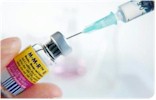Measles
Measles was declared to be eliminated from the United States in 2000. The CDC defines "elimination" as the absence of a specific disease for a period of 12 months or more in a certain geographic area. Measles is no longer endemic (constantly present) in the US because of a highly effective vaccine, a strong vaccination program with a high coverage rate in children, and a public health program that can detect and respond quickly to outbreaks.
But in recent years, measles has become more of an issue in the US. Since measles is still common in many other areas of the world, travelers will continue to bring this disease into the United States from areas such as England, France, Germany, India, Vietnam, and the Philippines. Measles is highly contagious, so anyone who is not protected against it is at risk of getting the disease. People who are unvaccinated for any reason, including those who refuse vaccination, risk becoming infected with measles and spreading it to others.
Since 2010, measles cases in the US have ranged from a low of 55 to a high of 667. 2019 is expected to surpass the number of cases from 2014, since the current number of cases only covers one-third of the year, January through April 2019.
 Chart: https://www.cdc.gov/measles/cases-outbreaks.html
Chart: https://www.cdc.gov/measles/cases-outbreaks.html
*Cases as of December 29, 2018. The case count is preliminary and subject to change.
**Cases as of April 19, 2019. The case count is preliminary and subject to change. Data are updated every Monday.
 Why are cases of measles up in the US? Besides travelers from other places coming into our country and US travelers returning home, a recent "anti-vaxer" movement has left countless children unprotected against these potentially deadly and easily preventable diseases. The MMR vaccine (Measles, Mumps, Rubella) is very safe and is highly effective in preventing these diseases. The CDC recommends children receive the first MMR dose between the ages of 12-15 months of age and the second dose between the ages of 4-6 years of age. The effectiveness of the vaccine is 97% after both doses, and 93% after the first dose.
Why are cases of measles up in the US? Besides travelers from other places coming into our country and US travelers returning home, a recent "anti-vaxer" movement has left countless children unprotected against these potentially deadly and easily preventable diseases. The MMR vaccine (Measles, Mumps, Rubella) is very safe and is highly effective in preventing these diseases. The CDC recommends children receive the first MMR dose between the ages of 12-15 months of age and the second dose between the ages of 4-6 years of age. The effectiveness of the vaccine is 97% after both doses, and 93% after the first dose.
Measles is a highly contagious virus affecting the respiratory tract. The measles virus can live for up to two hours in an airspace where the infected person coughed or sneezed. If other people breathe the contaminated air or touch the infected surface, then touch their eyes, noses, or mouths, they can become infected. Measles is so contagious that if one person has it, up to 90% of the people close to that person who are not immune will also become infected. Infected people can spread measles to others from four days before through four days after the rash appears.
The symptoms of measles generally appear about seven to 14 days after a person is infected. Measles typically begins with
- high fever,
- cough,
- runny nose, and
- red, watery eyes.
Two or three days after symptoms begin, tiny white spots (Koplik spots) may appear inside the mouth. Three to five days after symptoms begin, a rash breaks out. It usually begins as flat red spots that appear on the face at the hairline and spread downward to the neck, trunk, arms, legs, and feet. Small raised bumps may also appear on top of the flat red spots. The spots may become joined together as they spread from the head to the rest of the body. When the rash appears, a person’s fever may spike to more than 104° Fahrenheit.
Measles can be dangerous, especially for babies and young children. From 2001-2013, 28% of children younger than 5 years old who had measles had to be treated in the hospital. For some children, measles can lead to:
- Pneumonia (a serious lung infection)
- Lifelong brain damage
- Deafness
- Death

Infographic from the CDC, https://www.cdc.gov/measles/parent-infographic.html
Also visit https://www.cdc.gov/measles/index.html or https://www.in.gov/isdh/25456.htm
Mumps
Mumps is best known for the puffy cheeks and tender, swollen jaw that it causes. This is a result of swollen salivary glands under the ears on one or both sides, often referred to as parotitis. Other symptoms that might begin a few days before parotitis include:
- Fever
- Headache
- Muscle aches
- Tiredness
- Loss of appetite
Symptoms typically appear 16-18 days after infection, but this period can range from 12–25 days after infection.
Some people who get mumps have very mild symptoms (like a cold), or no symptoms at all and may not know they have the disease.
Mumps can occasionally cause complications, especially in adults. These can include:
- inflammation of the testicles in males who have reached puberty; this may lead to a decrease in testicular size
- inflammation of the ovaries and/or breast tissue
- inflammation in the pancreas (pancreatitis)
- inflammation of the brain (encephalitis)
- inflammation of the tissue covering the brain and spinal cord (meningitis)
- deafness
Neither inflammation of the testicles nor inflammation of the ovaries caused by mumps has been shown to lead to infertility.
Most people with mumps recover completely within two weeks.

For more information, visit https://www.cdc.gov/mumps/index.html
